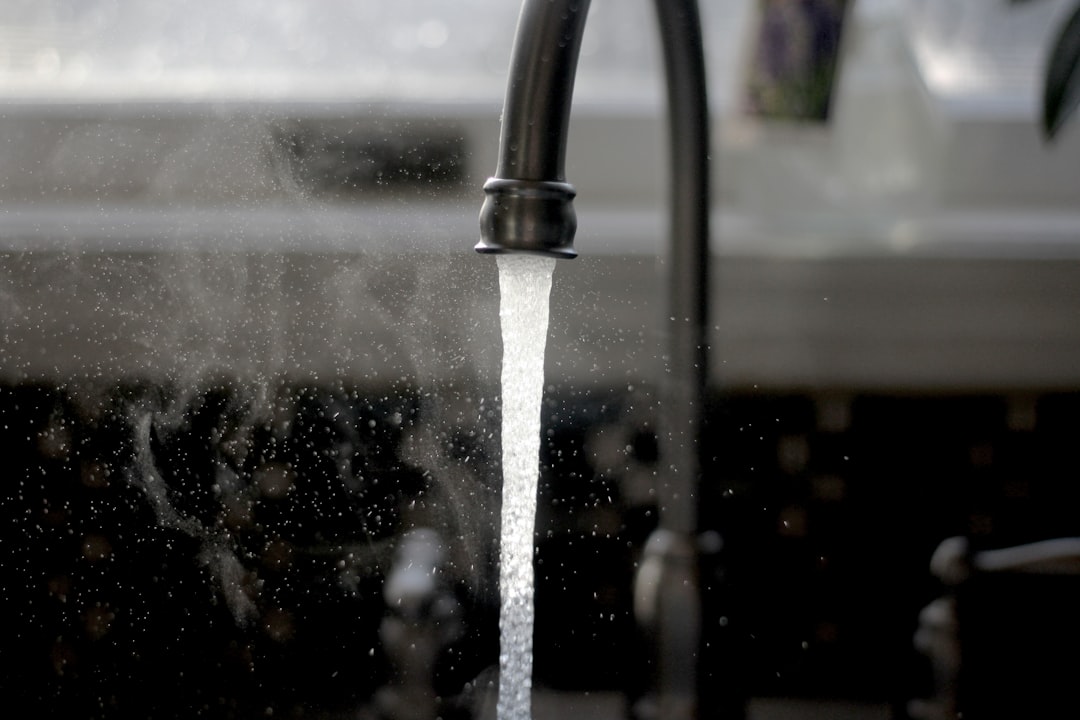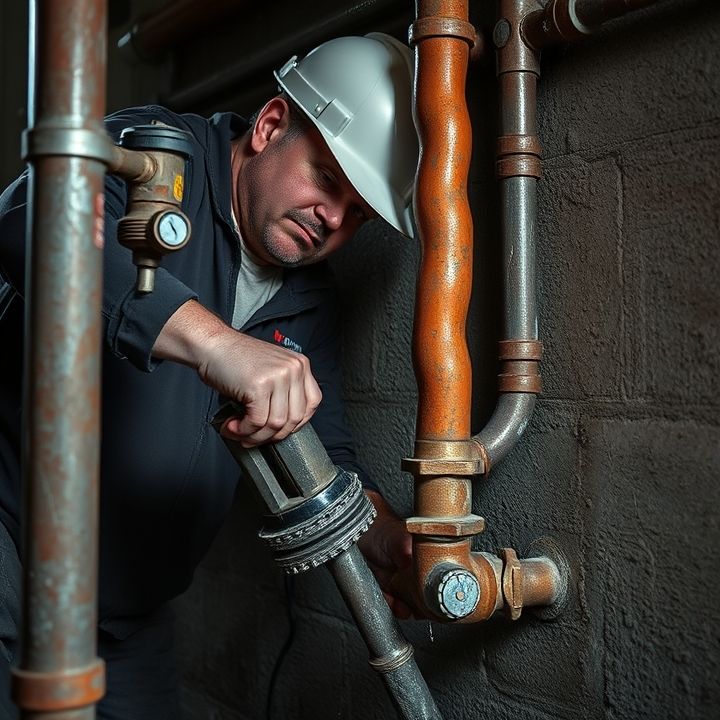Table of Contents
- Introduction
- Emerging technologies in plumbing pipe replacement
- Advancements in plumbing fixture installation techniques
- Innovations in plumbing leak detection and repair systems
- The role of plumbing camera inspection in maintenance
- Improvements in plumbing drain cleaning methods and tools
- Latest trends in plumbing water heater service and installations
- Enhanced plumbing emergency service strategies and response times
- Sustainable plumbing solutions: water filtration and backflow prevention systems
- Conclusion
- Frequently Asked Questions
Introduction
In a world where innovation drives efficiency, the plumbing industry is not left behind.
Everyday systems that keep our homes functioning—pipes, faucets, and drainage—are undergoing remarkable transformations thanks to groundbreaking advancements in technology.
From smart fixtures that optimize water usage to new materials that enhance durability, the latest trends are not merely about fixing leaks but about revolutionizing the entire system.
Imagine a plumbing setup that can detect issues before they arise, or a system where repairs can be managed with a smartphone app.
These technological feats promise not only to improve reliability but also to offer a sustainable approach to water management in our increasingly eco-conscious society.
Join us as we dive deep into the realm of modern plumbing innovations, examining the tools and technologies that are shaping the future of this essential service.
Get ready to discover how plumbing is transforming from a basic necessity into a sophisticated, tech-savvy domain.
Emerging technologies in plumbing pipe replacement
Emerging technologies in plumbing pipe replacement are transforming how repairs and installations are conducted, leading to increased efficiency and reduced disruption. One significant advancement is the use of trenchless technology, which allows plumbers to replace or repair pipes without extensive digging. This method involves creating a small entry point and using specialized equipment to install new pipes within the old ones, minimizing damage to surrounding landscapes.
Another innovation is the development of advanced materials such as PEX (cross-linked polyethylene) and HDPE (high-density polyethylene). These materials offer greater flexibility and resistance to corrosion, making them ideal for various plumbing applications. Smart plumbing systems equipped with sensors can monitor water flow and detect leaks in real-time, allowing for timely maintenance and cost savings.
Additionally, robotic technologies are being integrated into plumbing processes. Robots can navigate inside existing pipes to assess condition, perform repairs, or facilitate the installation of new piping. These advancements not only streamline the rehabilitation process but also extend the lifespan of plumbing systems. As these technologies continue to evolve, the plumbing industry is likely to see further improvements in efficiency and effectiveness.
Advancements in plumbing fixture installation techniques
Recent advancements in plumbing fixture installation techniques have significantly improved efficiency and ease of installation. One of the most notable developments is the introduction of modular plumbing systems. These systems consist of pre-fabricated components that can be quickly assembled on-site, reducing labor time and minimizing the risk of errors. Additionally, advancements in technology have led to the use of specialized tools, such as power drills and pipe cutters, that enhance precision.
Another significant trend is the adoption of smart plumbing fixtures, which offer features such as automatic shut-off valves and leak detection sensors. These fixtures not only improve water conservation but also simplify installation with user-friendly systems that guide plumbers through the process.
Furthermore, innovative materials, such as flexible plastic piping, are becoming increasingly popular due to their lightweight and durable nature, allowing for easier handling and installation in tight spaces. Together, these advancements are transforming plumbing fixture installation into a more streamlined and efficient process, ultimately benefiting both plumbers and homeowners.
Innovations in plumbing leak detection and repair systems
In recent years, innovations in plumbing leak detection and repair systems have significantly enhanced the efficiency and effectiveness of water management. Advanced technologies such as acoustic sensors and thermal imaging are now used to detect leaks with remarkable precision. These sensors can identify sound waves emitted by leaking pipes or changes in temperature caused by escaping water, allowing for early detection and rapid response.
Moreover, smart monitoring systems have been developed to provide real-time data on water usage and leak status. These systems can automatically alert homeowners or facility managers to potential issues before they escalate into significant problems. Integration with smart home technology allows users to track their plumbing systems remotely and receive notifications directly to their smartphones.
Additionally, new repair techniques, such as trenchless technology, enable quicker, less invasive repairs. This method involves creating access points and using specialized equipment to repair or replace pipes without extensive digging. These innovations collectively contribute to better resource management and lower environmental impact in plumbing.
The role of plumbing camera inspection in maintenance
Plumbing camera inspection plays a crucial role in the maintenance of plumbing systems, providing an efficient way to diagnose issues that may not be visible through traditional methods. Using high-definition cameras, plumbers can inspect the interior of pipes and drainage systems without the need for invasive procedures. This technology allows for real-time video feed, enabling professionals to identify blockages, leaks, cracks, or corrosion within the pipes.
One of the primary benefits of plumbing camera inspections is the cost-effectiveness they offer. By pinpointing the exact location and type of issue, plumbers can avoid unnecessary digging and repairs, saving both time and money for homeowners. Additionally, these inspections contribute to preventive maintenance, allowing property owners to address small problems before they escalate into major repairs.
Furthermore, the data collected from the camera inspections can be documented and stored for future reference, providing valuable insights into the condition of plumbing systems over time. This proactive approach not only ensures the longevity of plumbing systems but also enhances overall efficiency.
Improvements in plumbing drain cleaning methods and tools
Recent advancements in plumbing drain cleaning methods and tools have significantly improved efficiency and effectiveness. Traditional methods, such as using a plunger or snake, are being supplemented with modern technologies that offer faster results. For instance, the use of hydro jetting employs high-pressure water streams to clear clogs and build-up within pipes. This method not only removes blockages but also cleans the interior of the pipes, preventing future issues.
Additionally, video camera inspection technology allows plumbers to visually assess the condition of pipes and identify the exact location and nature of clogs without intrusive exploration. This targeted approach reduces unnecessary repairs and costs. Moreover, electric drain augers have become more sophisticated, providing enhanced torque and maneuverability, which can easily navigate through complex plumbing systems.
Green technologies are also emerging, with biodegradable drain cleaning solutions that effectively break down organic matter without harming the environment. These advancements are revolutionizing the plumbing industry, providing both professionals and homeowners with better tools to maintain their plumbing systems efficiently.
Latest trends in plumbing water heater service and installations
In recent years, plumbing technology has seen significant advancements, particularly in water heater service and installations. One of the latest trends is the rise of tankless water heaters, which provide hot water on demand, eliminating the need for bulky storage tanks. This not only saves space but also improves energy efficiency, as these systems heat water only when needed.
Another trend is the integration of smart technology in water heating systems. Smart water heaters can be controlled via smartphone applications, allowing homeowners to monitor energy usage and adjust settings remotely. This feature enhances convenience and helps in optimizing energy consumption.
Moreover, there is an increasing focus on eco-friendly water heating solutions, such as solar water heaters and heat pump systems. These options utilize renewable energy sources, reducing carbon footprints and energy costs over time.
Lastly, advanced installation techniques, including the use of high-quality materials and precision tools, ensure greater reliability and longevity for water heater systems. Keeping up with these trends can greatly enhance a plumber’s service offerings and customer satisfaction.
Enhanced plumbing emergency service strategies and response times
In recent years, enhanced plumbing emergency service strategies have revolutionized the way plumbing issues are addressed. Rapid response times have become crucial for both residential and commercial plumbing services, as timely action can prevent significant damage and costly repairs. Many plumbing companies now utilize advanced scheduling software that allows them to allocate resources more efficiently and respond to emergencies swiftly.
Furthermore, the integration of GPS technology enables plumbers to navigate to job sites quickly, ensuring they arrive promptly. Some companies are also adopting mobile apps that allow customers to report issues in real-time, complete with photos and descriptions, which helps plumbers understand the problem before they arrive. These innovations not only improve service efficiency but also enhance customer satisfaction by reducing wait times.
Additionally, proactive maintenance strategies are increasingly being emphasized, encouraging regular inspections and timely repairs. These initiatives help to identify potential plumbing issues before they escalate, ultimately leading to fewer emergencies. As the plumbing industry continues to evolve, these enhanced emergency service strategies play a vital role in ensuring reliable and effective plumbing solutions for all.
Sustainable plumbing solutions: water filtration and backflow prevention systems
Sustainable plumbing solutions are essential for promoting water conservation and protecting public health. Two significant advancements in this area are water filtration systems and backflow prevention systems.
Water filtration systems have evolved to provide cleaner, safer drinking water by eliminating impurities, contaminants, and harmful microorganisms. Modern filtration technologies include reverse osmosis, activated carbon filters, and UV disinfection, enhancing the quality of water for residential and commercial use. These systems not only ensure that water is safe but also reduce the reliance on bottled water, which is beneficial for the environment.
Backflow prevention systems play a crucial role in safeguarding potable water supplies from contamination. These systems are designed to prevent backflow, which can occur when there is a drop in water pressure, allowing contaminated water to flow back into clean water lines. Utilizing check valves, air gaps, and other mechanisms, these systems are vital in protecting public health and maintaining the integrity of water distribution systems.
Together, water filtration and backflow prevention systems represent significant strides toward sustainable plumbing practices.
Conclusion
In conclusion, the advancements in plumbing technology signify a transformative era for the industry, enhancing efficiency, sustainability, and safety. From innovative pipe replacement methods and smart leak detection systems to eco-friendly heating solutions and real-time monitoring, these technologies not only improve plumbing operations but also offer homeowners cost-effective solutions and peace of mind. With the introduction of cutting-edge tools and materials, plumbers can now address issues more quickly and effectively, reducing disruption and minimizing environmental impact. As the plumbing landscape continues to evolve, embracing these innovations will undoubtedly lead to better services and enhanced customer satisfaction. If you find yourself in need of reliable plumbing assistance or want to upgrade your existing systems, don’t hesitate to reach out for expert help. Call 573-555-2121 today and experience the future of plumbing solutions tailored to your needs!

